#umar mehraj
Text
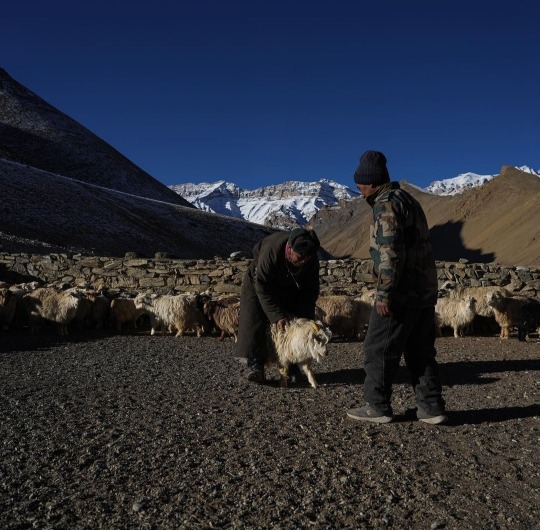

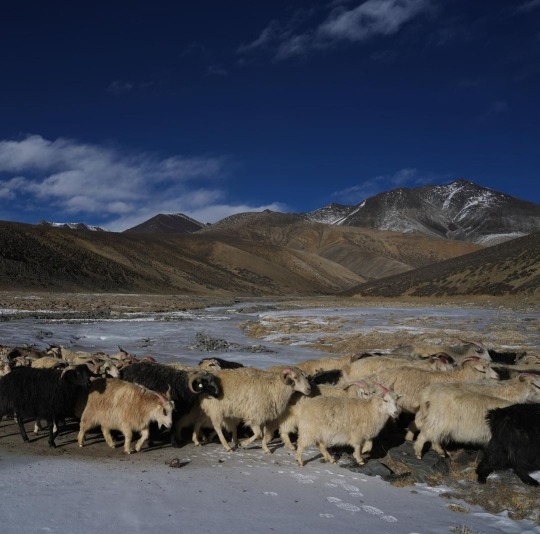

Ladakh, Kashmir.
Umar Mehraj
58 notes
·
View notes
Photo

Kashmiri men take a break to chat while selling their produce at the floating vegetable market on Dal Lake in Srinagar, Kashmir. by Umar Mehraj.
#umar mehraj#photography#kashmiri migrants#the kashmiri files#kashmiri youth#kashmiri muslims#kashmir#srinagar#dal lake#lake#lake aesthetic
1 note
·
View note
Text
Why Palestine 🇵🇸 is important for Muslims?
It's the land and Abode of Prophets (As)
Prophet Abraham (as) Migrated to Palestine.
Allah Saved Prophet Lut (as) here from the Punishment which was given to his tribe.
Prophet Dawood (as) resided in Palestine and Built a Mehrab there.
Prophet Suleiman (as) Ruled whole world from Palestine, The Story of Ants told in Quran (27:18) happened in one of the Valleys of Palestine.
The Mehrab of Prophet Zakariya(as) is in Palestine.
Prophet Musa (As) told his People to enter the Blessed City of Palestine, He Called it "Blessed" because it was the land of Prophets and Clean from " Shirk"
The Miraculous Birth of Prophet Isa (as) happened in Palestine.
When they tried to k!ll Prophet Isa(as) , Allah took him to skies from the City of Palestine.
Many Scholars say that the fight of Gov and Magog will Start from Palestine.
Palestine is also called the " Qibla-e-awwal" ( First Qibla) of Muslims.
During the blessed Night of Mehraj, Prophet Mohammad (PBUH) was taken to Masjid -e-Aqsa where He led the Prayers and All Prophets (as) Prayed Behind Him.
Post the Conquest of Mecca Hazrat Umar (rz) was the first man to conqueror Palestine and After him Salahuddin Ayubi conquered it
215 notes
·
View notes
Text
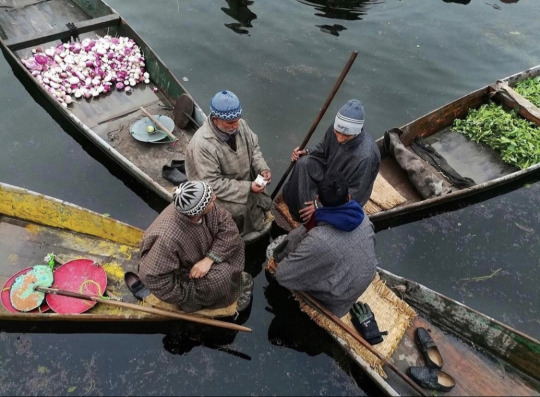
this is acc my favourite picture that ive seen on tumblr
ph: umar mehraj
295 notes
·
View notes
Video
youtube
A documentary that I co-directed, edited and produced, Raqs-e-Inquilab (English title: Art in a Time of Conflict), which premiered at the South Asian Short Film Festival in Kolkata earlier this year is now live on YouTube through Journeyman Pictures, one of the world’s leading distributors of original documentaries.
Raqs-e-Inquilab interweaves the personal narratives of four Kashmiri artists, three of whom – Syed Mujtaba Rizvi, Hina Arif and Zeeshan Jaipuri – are children of the conflict, their impressionable adoloscent years years landing right in the middle of the region’s most violent period in the 90s. The fourth character, renowned painter and art teacher Masood Hussain, grew up in a time of relative peace before becoming witness to Kashmir’s tragic transformation. While their individual traumas are unique, they are connected by their pursuit to process this splintered world through unfiltered artistic expression.
We're forever grateful to Masood sa’ab, Hina, Mujtaba and Zeeshan for trusting us with their stories, and to so many people - from Kashmir, Mumbai and Chennai - who helped us on this two-year journey to make the film and put it out.
Hope you like the film.
FILM CREDITS
Directed and Produced by Niyantha Shekar and Mukti Krishan.
Co-produced by Anirudh Ganapathy and Charudatta Rane.
Cinematography by Anirudh Ganapathy.
Edited by Niyantha Shekar.
Additional Cinematography by Azaan Shah, Charudatta Rane and Mukti Krishan.
Sound Design by Dinesh Yuvi.
Colour Grade by Kabir Nagranee.
Online Edit by Mukti Krishan.
Graphics by Zenish Mehta and Mukti Krishan.
Archival footage and photographs from Umar Mehraj.
Poster Design by Anirudh Ganapathy.
#documentary#kashmir#raqs-e-inquilab#niyantha shekar#mukti krishan#journeyman pictures#art#conflict#mujtaba rizvi#hina arif#zeeshan jaipuri#masood hussain#artist#film#doc#short doc#docs#docu#non-fiction#journeyman#india#srinagar
11 notes
·
View notes
Photo

Kashmiri men take a break to chat while selling their produce at the floating vegetable market on Dal Lake in Srinagar, Kashmir. Photographed by Umar Mehraj.
0 notes
Text
Al Quds
One has so many ideas of what a trip to Bait al Maqdis would be like. There is so much rich history and architecture here. There are so many Aqsa Ziyarah guides to read, but so little time. There are so many references to the Holy City in the Quraan and hadith. The same can be said about Makkah and Madina. When people get to these places, many become flustered about which building is which, which parts are holier than the others (which part of the Raudah tul Jannah is the most rewarding for me, must I read Salaatul Tawaaf in front of the Maqam e Ibrahim???, is it better to read salaah in Masjid e Qibly or Qubbatul Saqarat - Dome of the Rock???). In truth, Allah selected Makkah for the building of Baitullah because it is directly under His ‘Arsh (Throne) and He picked Aqsa as the Holy City because it is directly under Sidratul Muntahaa. The Aqsa compound and Haram boundary are literally holy areas of land. One may pray anywhere within the boundaries and receive abundant reward for it. There is no need to worry about which gate one should enter from, or which section of the masjid is the holiest. One needn't worry about which supplication was read by a particular prophet in a particular Haram. The anxiety tends to be distracting. Yes, the supplications are truly beautiful and very fitting, but God knows our hearts better than we do. You do not need to ask God to forgive you in the exact words that Prophet Aadam (AS) used when he was cast away from Paradise. You don't need to memorise the supplication of the youth in the Cave of the Sleepers when making ziyarah there. One need only search one's own hearts, rest one's face down in honest and sincere sujood (bowing), facing Makkah in any of these holy cities, and all barriers between God and His servants dissappear. However, this is just my humble opinion. Now on to the reason you're reading this post: Al Quds, and more importantly Masjid Al Aqsa. After a delayed flight and negligible amount of sleep, we arrived at the Jordan-Israel border. Many in the group were tense, having shared stories from people who've been, about how they were treated at the border. It was slightly confusing, as there was one Israeli border agent who wished us all Hajj Mabroor with a big smile on his face, and then there were others who gave us steely looks and avoid any unnecessary contact. After some unnecessary waiting in a room (for about 2 or 3 hours) we were given our visas and ‘allowed’ to enter Israel. As we drove through a tunnel our Imam told us to keep our eyes peeled to the left of the bus as we exited it, and there it was in all its splendour, like a giant nugget of gold in a sand-heap: Qubbatus Saqqara (Dome of the Rock). I must give a huge shout out to the Umayyid Khaliph, Abdul Malik bin Marwan, for being so extra when he commissioned the building of the Dome of the Rock in 691 AD. It is truly breath-taking, at all times of the day and from every angle. Completely over the top, because its sole purpose is to enclose the rock formation which is most likely the location from which Prophet Muhammad ascended to the heavens for Mehraj. Nonetheless, beautiful it is and quite inviting for someone looking for a pretty spot to pray in. Directly across from it is Masjid e Qibly which was originally commissed by Umar ibn Khattab as a wooden structure that could house 3,000 congregants, but which was destroyed by earthquakes. Masjid e Qibly in its current form was built by the Umayyad Khalif Abdul Malik’s son Walid. A much more humble-looking mosque, but still there is an aire of peacefulness in its simplicity, with less for the eye to be distracted by. Our tour guide told us that building masjids around historically significant sites or around empty structures which commemorate dead Prophets, Sahaabas and saints, are all innovations and can lead people down paths very dangerously close to shirk (worshipping others besides Allah). It is so easy to walk into a masjid here and immediately feel tempted to whip out your phone and snap away at rock formations, or names of dead prophets on plaques. The tour guide said that prayer should be the first thing you do in a mosque, directed to God alone, and I fully agree. As beautiful as it all is, the supposed location where Mehraj happened does not matter. What matters is that Mehraj happened. Whether or not the Buraq was tied to a ring on a wall, the way a mortal animal gets tied up, is not important. What is important was that the other-worldly creature bore the Prophet of God beyond all the known physical layers of space and time, to a realm that no creature has entered before. The true essence of Aqsa is the imagery conjured up by its history. The imagery of the Jinns building mosques under the orders of Prophet Suleyman AS. The imagery of the Prophet Muhammad ﷺ being transported from Masjid al Haram to Al Aqsa (the journey of Isra’) and then up to the heavens for a direct discussion with God (mehraj). The imagery of the Prophet Muhammad ﷺ returning to Aqsa (once bare and mountainous lands, with none of the current mosques yet built) and leading 124,000 prophets in prayer as Imaam. When I contemplate this number of blessed congregants, it is hard not to imagine that a Prophet of God once stood where I am sitting right this moment, in Masjid e Qibly. The imagery of Umar ibn Khattab RA entering Baitul Maqdis with the Muslim army and the Mu'athin of Masjid e Nabawi, Bilal, to claim the city, years after Prophet Muhammad ﷺ had died. The imagery of Bilal being asked to recite the call to prayer and the tears that flowed from the entire army when he began, as all the men remembered the sight of their beloved Prophet Muhammad ﷺ leaving his home to walk to his mehrab for prayer during the recitation of athaan, a sight they will never see again. The imagery of the Christian soldiers looking on at this sight, and wondering what kind of man could stir such emotions in his followers. The imagery of the 2nd Khaliph of Islam signing a declaration offering safety and freedom of religious expression to all citizens within the city (this was long before the Declaration of Independence, mind you, and was the first document of its kind). The imagery of the slaughter of the Muslims, Christians and Jews living within the city at the hands of the Templar Knights many years later. The imagery of Salahuddin Ayoobi and his army recapturing Al Quds from the Templar Knights, offering the same terms of safety and religious freedoms as Umar ibn Khattab RA did. This is what brings tears to the eyes of those who visit Aqsa. The notion of what this blessed land means to so many people from so many faiths. The notion (as my family and I have been told by several Palestinians) that this land belongs to all Muslims, not just those born within its borders. All have claim to pray here, by the commandment of God, which is much stronger than those of any politician. This makes coming here so much more imperative. The things I feel cannot be adequately described in words. They have to be felt.
1 note
·
View note
Text
This slideshow requires JavaScript.
Keeping accreditated journalists out of government events and government offices, under one ruse or the other, has become such a norm in State after State that it barely attracts any more than momentary attention.
But when six accomplished journalists are kept out of the Republic Day function in Jammu & Kashmir, a state the Narendra Modi government has pushed to the brink and beyond, it is time to sit up and take note.
For, those barred were not rookie reporters but photo and video journalists representing international agencies like Associated Press, Reuters and AFP.
Mehraj-ud-Din, bureau chief, Associated Press Television
Umar Mehraj, video journalist, Associated Press Television
Tawseef Mustafa, photojournalist, AFP
Danish Ismail Wani, photojournalist, Reuters
Bilal Ahmad Bhat, bureau chief, ANI
Atman Farooq, photojournalist, Daily Kashmir Uzma
And more importantly, the bizarre reason trotted out for their exclusion: that the CID report on these journalists was “adverse”.
***
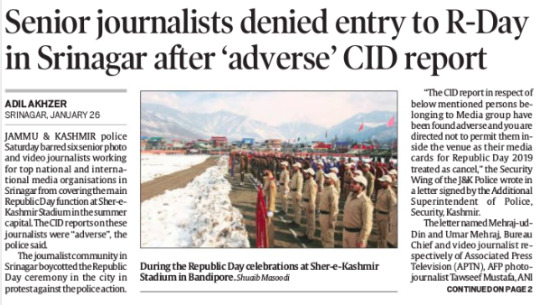
The Sunday Express has telling reactions some of them.
# “I have covered dozens of Prime Ministerial visits, and have never faced a problem like this. This is the first time in my 28-year career that I have seen this situation in Kashmir,” said Tawseef Mustafa of AFP, who has covered wars in Afghanistan, Iraq, and Syria.
# “I have been in this profession for more than two decades now. I hold a passport that was issued after proper verification. I do not know what adverse things they have found against me all of a sudden,” said Danish Ismail.
# “In my 40 years in the profession, this is the first time that such an unfortunate incident has happened. We have worked in the worst conditions in Kashmir, but have never faced such a problem,” said Mehraj-ud-Din.
Political parties and media bodies condemned the incident and the “concerned authorities” have promised action, but quite clearly, something is afoot in Kashmir vis-a-vis cameramen and photographers, especially those reporting for foreign news agencies.
Just last week, pellet guns were fired at them, although they wore press jackets, carried press cards, waved their cameras and shouted they were from the press.
And, in December 2018, the visa of Pulitzer Prize-winning Reuters photographer Cathal McNaughton was not renewed, denying his entry back into India, because he had “violated conditions by travelling to restricted and protected areas in Jammu & Kashmir without permission”.
Also read: “Since Shujaat Bukhari‘s murder, we have been dying a little every day”
In Jammu & Kashmir, is there a deliberate design to delegitimise photo and video journalists, and to remove them from the scene of action? Keeping accreditated journalists out of government events and government offices, under one ruse or the other, has become such a norm in State after State that it barely attracts any more than momentary attention.
#AFP#ANI#APTN#Associated Press#Cathal McNaughton#Churumuri#Daily Kashmir#jammu & Kashmir#Narendra Modi#Pulitzer Prize#Reuters#Sans Serif#The Indian Express
0 notes
Link
Open Access
Pteris Vittata Inter-Planting for Trapping of Arsenic Accumulation into Potato
By: U. Mayda, Rasheda Yasmin Shilpi, T. Taufique, H. Mehraj, A.F.M. Jamal Uddin
Int. J. Biosci. 8(1), 1-7.
| Views 277 |
Preview
Open Access
Assessment of Aflatoxin Level in Stored Wheat of Godowns of Hyderabad Division and Decontamination by UV Radiation
By: Allah Bux Ghanghro, Mahvish Jabeen Channa, Saghir Ahmed Sheikh, Shafi Muhammad Nizamani, Irshad Hussain Ghanghro
Int. J. Biosci. 8(1), 8-16.
| Views 164 |
Preview
Open Access
Genetic transformation of an elite commercial wheat variety through Agrobacterium tumefaciens
By: Muhammad Ali, Muhammad Tahir, Shahid Hameed
Int. J. Biosci. 8(1), 17-24.
| Views 184 |
Preview
Open Access
GC-MS Analysis and Evaluation of In-vitro Antioxidant Potential and Total Phenolics Content of Wild Hops (Flemingia strobilifera (L.) W. T. Aiton)
By: Jhoan Rhea L. Pizon, Olga M. Nuñeza, Mylene M. Uy, W.T.P.S.K Senarath
Int. J. Biosci. 8(1), 25-32.
| Views 210 |
Preview
Open Access
In Vitro Alpha-Amylase and Antioxidant Activities of Bark Extracts of Charcoal Tree (Trema orientalis Linn.)
By: Dana Joanne Von L. Trono, Olga M. Nuñeza, Mylene M. Uy, W.T.P.S.K. Senarath
Int. J. Biosci. 8(1), 33-46.
| Views 216 |
Preview
Open Access
Identification of fragrance gene in some elite advance lines of rice cultivated in foothills of the Himalayas
By: Hamid Ali, Fida Muhammad Abbasi, Habib Ahmad, Aziz-Ud-Din, Abzar, Abdullah Khan, Muhammad Abid Khan, Irfan Ullah, Aqib Zeb, Adnan Sarwar
Int. J. Biosci. 8(1), 47-54.
| Views 281 |
Preview
Open Access
Comparison of the antioxidant activities, phenolic and flavonoids contents of the leaves-crud extracts of Moringa peregrine and Moringa oleifera
By: Mohamed A. El-Awady, Mohamed M. Hassan, El-Sayed S. Abdel-Hameed,Ahmed Gaber
Int. J. Biosci. 8(1), 55-62.
| Views 338 |
Preview
Open Access
Seed germination potential, phytochemical analysis and antioxidant activity of two tomato varieties
By: Mst. Samima Nasrin, Fatema Jesmin, M. Mostafizur Rahman, M. Firoz Alam
Int. J. Biosci. 8(1), 63-76.
| Views 218 |
Preview
Open Access
Mortality response of wheat aphid (Rhopalosiphum padi) against most commonly used insecticides in Pakistan
By: Muhammad Saleem Khan, Naureen Aziz Quershi, Muhammad Usman Khan, Farhat Jabeen, Muhammad Shakeel, Ali Umar, Muhammad Saleem Asghar
Int. J. Biosci. 8(2), 1-8.
| Views 229 |
Preview
Open Access
The rooting response of silvery (Leucophyllum frutescens) cuttings to different growing conditions and planting dates
By: Imtiaz Hussain, Nagina Zeb, Muhammad Sajid, Noor ul Amin, Abdul Mateen Khattak, Abrar Hussain Shah, Sayed Hussain, Aqleem Abbas
Int. J. Biosci. 8(2), 9-15.
0 notes
Text
India Shut Down Kashmir’s Internet Access. Now, ‘We Cannot Do Anything.’
MUMBAI, India — Masroor Nazir, a pharmacist in Kashmir’s biggest city, Srinagar, has some advice for people in the region: Do not get sick, because he may not have any medicine left to help.
“We used the internet for everything,” said Mr. Nazir, 28, whose pharmacy is near the city’s famed clock tower. He said he normally went online to order new drugs and to fulfill requests from other pharmacies in more rural parts of Kashmir Valley. But now, “we cannot do anything.”
As the Indian government’s shutdown of internet and phone service in the contested region enters its 11th day, Kashmir has become paralyzed.
Shopkeepers said that vital supplies like insulin and baby food, which they typically ordered online, were running out. Cash was scarce, as metal shutters covered the doors and windows of banks and A.T.M.s, which relied on the internet for every transaction. Doctors said they could not communicate with their patients.
Only a few government locations with landlines have been available for the public to make phone calls, with long waits to get a few minutes of access.
The information blockade was an integral part of India’s unilateral decision last week to wipe out the autonomy of Jammu and Kashmir, an area of 12.5 million people that is claimed by both India and Pakistan and has long been a source of tension. That has brought everyday transactions, family communications, online entertainment and the flow of money and information to a halt.
While Prime Minister Narendra Modi has promoted the rapid adoption of the internet, particularly on smartphones, to modernize India and bring it out of poverty, the country is also the world leader in shutting down the internet.
The country has increasingly deployed communications and internet stoppages to suppress potential protests, prevent rumors from spreading on WhatsApp, conduct elections and even stop students from cheating on exams. Last year, India blocked the internet 134 times, compared with 12 shutdowns in Pakistan, the No. 2 country, according to Access Now, a global digital rights group, which said its data understates the number of occurrences.
“Shutting down the internet has become the first go-to the moment the police think there will be any kind of disturbance,” said Mishi Choudhary, founder of SFLC.in, a legal advocacy group in New Delhi that has tracked the sharp rise in web shutdowns in India since 2012.
In Jammu and Kashmir, a Muslim-majority territory where security forces constantly worry about attacks by separatist militants, the internet has been blocked in at least part of the region 54 times this year, according to SFLC.in’s data. The authorities simply order internet service providers and phone companies to stop providing access to the web or to mobile networks.
But this latest shutdown has been far more sweeping than others, Kashmiris said.
Umar Qayoom, who used to spend his days running around Srinagar signing up merchants for Paytm, a digital payments service, is now stuck in his house. He said he had not been able to contact his girlfriend since the shutdown began, and his smartphone — his primary source of entertainment, with its endless supply of videos and social media — is an inert hunk of metal.
“I don’t know when to sleep, when to wake up, what to do with my life,” he said during a rare foray outside on Monday evening for Eid al-Adha, the holiest festival in Islam. “There is no life without internet, even in Kashmir.”
[Read more about Kashmir as a center of conflict for India and Pakistan.]
Muheet Mehraj, founder and chief executive of Kashmir Box, a start-up that buys traditional handicrafts like pashmina shawls and pottery from local artisans and sells them online, said he could not check incoming orders or communicate with his suppliers. His 25 employees are idle. If the shutdown lingers, they will soon be out of work.
“We’ve seen more than 400 shutdowns,” he said. “This has been the worst of them all.”
No one knows how long the blackout will last. In 2016, the internet was blocked in Kashmir for more than four months. The unpredictable access wreaked havoc with students, businesses and even musicians, who had relied on YouTube, Instagram and other digital services to reach potential audiences.
At a hearing on Tuesday, India’s Supreme Court declined to lift any of the current restrictions, accepting the government’s argument that the shutdown was needed to maintain order and would be “settled soon.” The next day, the police indicated that most of the valley would remain on lockdown, including on Thursday, India’s Independence Day.
“Kashmir has become invisible even to itself,” said Gurshabad Grover, a senior policy officer at the Center for Internet and Society in Bangalore, which published a report last year on the social and economic toll of internet shutdowns across India.
The United Nations has repeatedly condemned government-ordered internet shutdowns as a violation of human rights.
But that has not deterred India from routinely using the tool. Under India’s laws, authorities at even the local level can easily shut down internet access in the name of ensuring “peace and tranquillity.”
“It helps in any kind of situation which can flare up the sentiments of people and flare up the bulk mobilization of people,” said Rahul Pandey, deputy superintendent of police in Darjeeling in northeastern India, where the internet was blocked for about 100 days in 2017.
Raman Jit Singh Chima, Asia Pacific policy director at Access Now, said that Indian officials have seen few negative consequences from shutdowns, so they keep using them.
“It has become standard operating procedure among police,” he said.
But the true costs of such blockades are high.
Internet shutdowns from 2012 to 2017 cost India’s economy more than $3 billion, the Indian Council for Research on International Economic Relations estimated last year. And the number of stoppages has spiked since then.
The Darjeeling shutdown, one of the longest in the country, occurred after the state government decided it needed to quash a separatist movement that had clashed violently with security forces.
Darjeeling’s fabled tea industry, the lifeblood of the local economy, lost most of a year’s harvest as workers went on strike. Production was hurt the next year, too.
Many corporate tea buyers and traders sought tea elsewhere during the disruption and never came back, said Girish Sarda, director of Nathmulls, a tea exporter in the region.
“We lost many customers,” he said, estimating that the company’s revenue dropped more than 30 percent at the time. “Even when the internet is on, people think that this business is probably shut down.”
The government has argued that one reason for suppressing the internet in Kashmir was to stop the spread of false information.
But in the digital blackout, rumors have continued spreading the old-fashioned way: by word of mouth.
When thousands of protesters marched through Srinagar on Friday and security forces fired gunshots in response, word spread that there had been a massacre. Reporters who investigated found that at least seven people had been injured, but no one had died.
Other unverified reports of people being killed by the police have also circulated.
The enforced idleness creates another risk, said Mr. Qayoom, the Paytm employee stuck at home. When young people have nothing else to do, leaving the house to protest — or throw stones at the police — looks a lot more appealing.
“There is going to be bloodshed,” he said.
Vindu Goel reported from Mumbai, and Karan Deep Singh and Sameer Yasir from Srinagar, Kashmir. Hari Kumar contributed reporting from New Delhi.
Sahred From Source link Business
from WordPress http://bit.ly/2N9uksp
via IFTTT
0 notes
Text

Kashmiri men take a break to chat while selling their produce at the floating vegetable market on Dal Lake in Srinagar, Kashmir. Photographed by Umar Mehraj.
#umar mehraj#dal lake#srinagar#kashmir#kashmiri culture#south asia#south asian#peoplehood#photography#ph#free kashmir
14K notes
·
View notes
Text
NIA after Geelani’s family: Naeem in Delhi again being grilled
SRINAGAR: The son of senior resistance leader Syed Ali Geelani, Dr Naeem Geelani on Monday has appeared before the NIA in New Delhi in which he was questioned for additional than 8 hrs, a household resource claimed. He once again has been questioned to surface on Tuesday.
Dr Naeem is the elder son of Hurriyat Meeting (G) chairman Syed Geelani, and experienced introduced himself now right after he was served a next summons by the National Investigation Agency (NIA) asking him to show up at the agency’s Delhi headquarters for questioning in a funding circumstance.
The family supply stated in 2017 Geelani’s both sons Dr Nayeem and Dr Naseem experienced appeared in advance of NIA. While Naeem appeared for 10 times, Dr Naseem was questioned to look for 12 days. A calendar year later, in 2019, Dr Naseem was grilled once again for two times at NIA headquarters and for one particular day at ED’s. Soon soon after that, his brother was grilled at NIA.
NIA has so considerably arrested a lot of senior resistance leaders like Shabir Shah, Mehraj-u-Din-Kalwal, and Mohammad Altaf. The NIA experienced also summoned Mirwaiz Umar Farooq to Delhi, for the initial time, for questioning.
NIA has speeded up its investigation due to the fact 2017, and professional-India political functions have been accusing every single other of supplying an open hand to NIA, in particular following it summoned the Mirwaiz to Delhi. The JK Government has been holding the Mirwaiz beneath house arrest alternatively of incarcerating him in jail. His summoning to Delhi was protested across occasion traces in Kashmir Valley.
The Joint Resistance Leadership (JRL) comprising Syed Ali Geelani, Mirwaiz Umar Farooq and Muhammad Yasin Malik has accused the NIA of making use of summons as a pressure tactic to cow down the management.
Arrest spree, Enforcement Directorate, Kashmir conflict, Kashmir Dispute, Kashmir difficulty, Kashmiri detainees, MDTMG, NIA, SAS Geelani
Related
The post NIA after Geelani’s family: Naeem in Delhi again being grilled appeared first on Defence Online.
from WordPress https://defenceonline.com/2019/04/23/nia-after-geelanis-family-naeem-in-delhi-again-being-grilled/
0 notes
Text
Mirwaiz will deliver sermon on Meraj-un-Nabi on April 3 at Aali Masjid Eidgah Srinagar
Mirwaiz will deliver sermon on Meraj-un-Nabi on April 3 at Aali Masjid Eidgah Srinagar
Anjuman-e-Auqaf Jama Masjid has announced that in connection with the auspicious occasion of Meraj-un Nabi (SAW), Mutahida Majlis-e-Ulema patron and Mirwaiz of Kashmir Molvi Mohammad Umar Farooq, in keeping with tradition will deliver a special sermon and shed light on the philosophy of Mehraj-un Nabi (SAW) on April 3rd 2019 from Magrib to Isha prayers […]
View On WordPress
#baramulla news#breaking news#Kashmir news#latest news updates#news of kashmir#news of srinagar#present kashmir#pulwama news#srinagar news
0 notes
Text
Joint Resistance Leadership (JRL) Called For Complete Shutdown For Tommarow
Joint Resistance Leadership (JRL) Called For Complete Shutdown For Tommarow
Joint Resistance Leadership (JRL) Called For Complete Shutdown For Tommarow Joint Resistance Leadership (JRL) comprising Syed Ali Geelani, Mirwaiz Umar Farooq and Mohammad Yasin Malik expressed deep anguish and grief at the killing of son of the house owner young Rayees Ahmed and two armed youth Mehraj ud Din Bangroo and Faid Mushtaq Waza in Fateh Kadal today morning by the Indian forces,…
View On WordPress
0 notes
Text
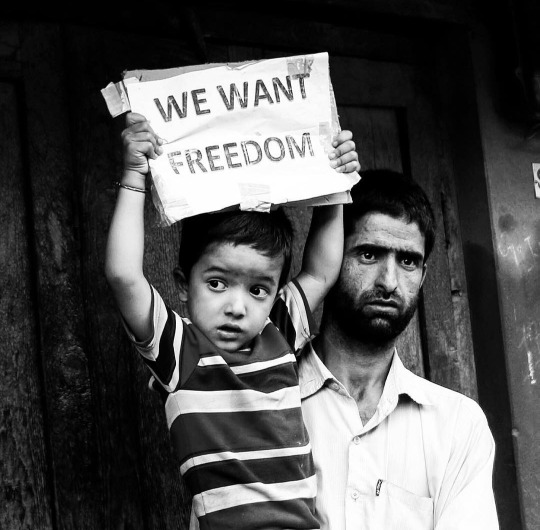
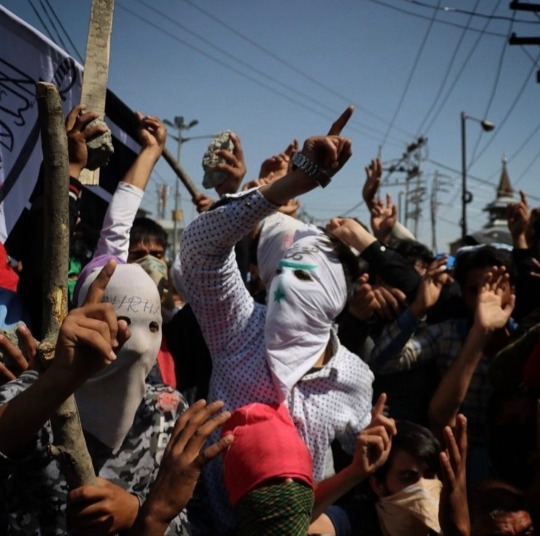
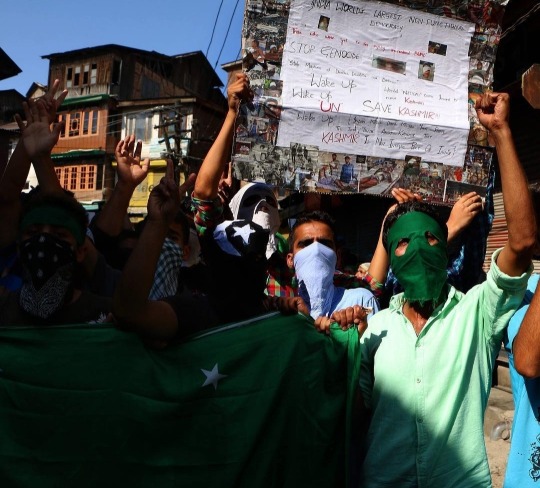

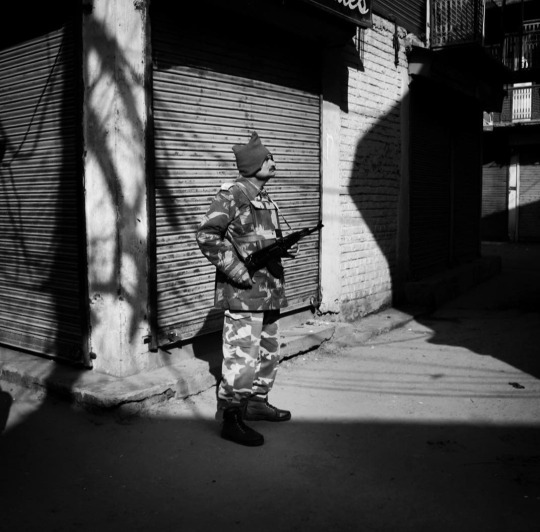
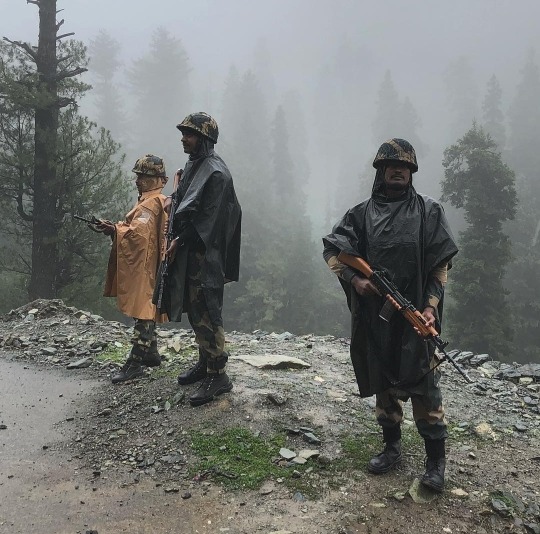




Life in Indian occupied Kashmir by Umar Mehraj
#umar mehraj#free kashmir#kashmir#jammu and kashmir#srinagar#south asia#south asian#street photography#portrait photography#photography#ph
74 notes
·
View notes
Text


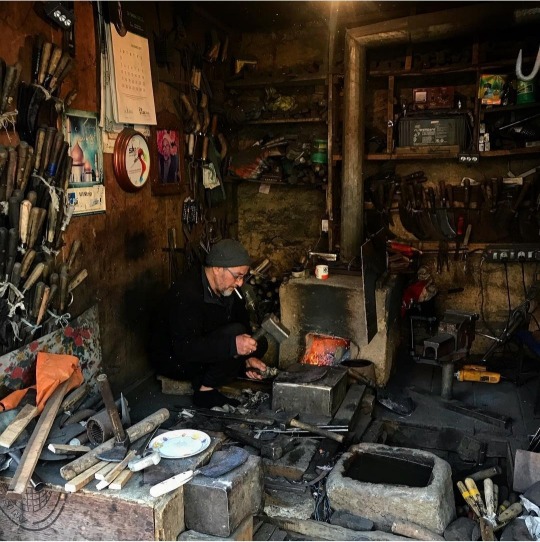
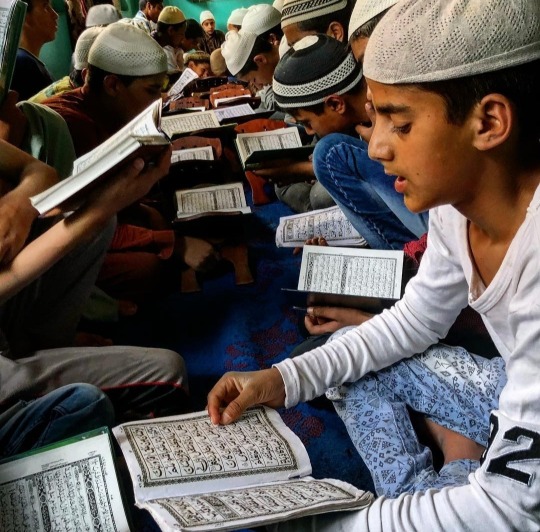

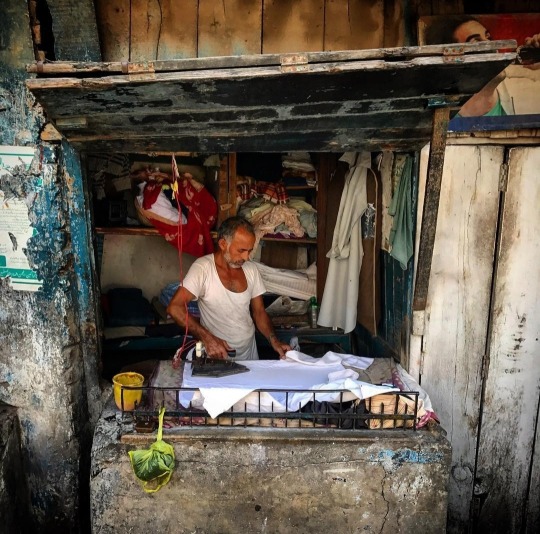


Kashmir by Umar Mehraj
#kashmir#jammu and kashmir#free kashmir#kashmiri culture#south asia#south asian#peoplehood#portrait photography#street photography#photography#ph#umar mehraj
61 notes
·
View notes